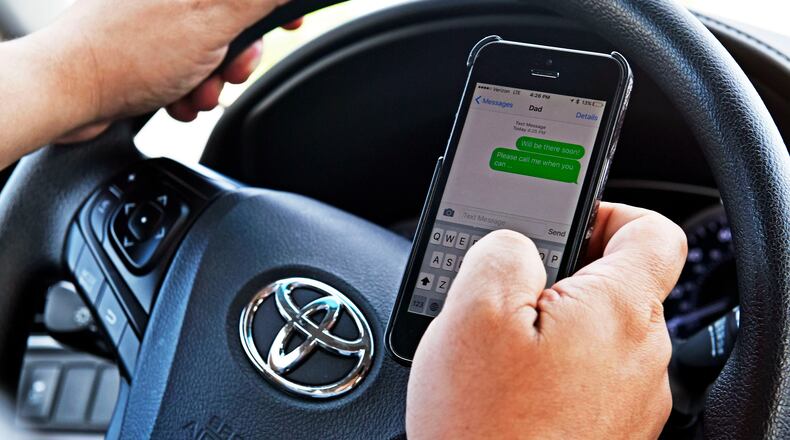The active bill, Ohio House Bill 95, was introduced in March. It would make distracted driving a secondary offense that can result in a fine of up to $100. Drivers would have to be pulled over first for a moving violation before being cited for the distracted driving offense.
RELATED: OSU student killed in distracted crash: ‘In a blink of an eye, it can be over’
State Rep. Niraj Antani, R-Miami Twp., doesn’t favor that approach.
“A $100 fine is not going to deter this kind of behavior,” Antani said. “It criminalizes talking on the phone. Right now, I have my phone to my ear, and it criminalizes that.”
“If we want to talk about texting while driving, that’s a conversation we can have,” he added.
Texting while driving became illegal in Ohio in 2013, becoming a primary enforcement matter for drivers younger than 18.
RELATED: You won’t believe apps used by distracted drivers: Netflix? You Tube?
Calls to House Bill 95’s co-sponsors, Reps. Bill Seitz, R-Cincinnati, and Jim Hughes, R-Upper Arlington, were not returned.
“Our legislative goal is to encourage Ohio drivers to be cautious when driving and to think of their safety before anything else,” Hughes said in a June press release. “No text message or phone call is worth losing your life or harming someone else.”
Tickets not solution
“I don’t know that we can write our way out of this with tickets,” said Dominic Tiberi, a Dublin resident whose 21-year-old daughter Maria was killed in a distracted driving crash in 2013 on Interstate 270.
Laws need to be reasonable and enforceable, Antani said. “It needs to be something that actually solves the problem.”
And it’s not clear that banning cell phone use and texting reduces crashes.
“We don’t see evidence that crashes actually go down, which is kind of perplexing,” said Jessica Cicchino, vice president for research at the Insurance Institute for Highway Safety.
“Common sense needs to be part of this equation,” said Eddie Lumsden, a member of the Georgia House of Representatives and part of a study committee in that state exploring possible solutions to distracted driving.
>>>RELATED: Fatal truck wreck killing son spurs father to take action
The Georgia committee began meeting at the end of August, driven in part by sharp auto insurance rate increases in that state, Lumsden said.
“The issue of distracted driving is more than just the use of electronic devices,” said Lumsden, who is also a retired Georgia highway trooper.
In fact, national data actually shows that driver hand-held cell phone use actually fell in 2016. The percentage of drivers holding cell phones to their ears while driving fell from 3.8 percent in 2015 to 3.3 percent in 2016, according to the National Highway Traffic Safety Administration.
The problem is anything that diverts a driver’s attention, Lumsden said. Eating. Conversing. Adjusting the radio, putting on make-up, even things outside the vehicle like billboards.
“When you talk about distracted driving, it’s more than one thing,” he said.
RELATED: Trucks get blame for unsafe highways, but car drivers cause majority of crashes
Sharon Montgomery — a Gahanna resident who lost her husband in 2000 distracted-driving crash — argues for more rigorous data collection, saying law enforcers should strive to identify when distractions are one cause of an accident.
“We need to identify the problem before we can hope to solve it,” she said.
It’s not enough simply to call for tougher laws, Montgomery and Tiberi both say. Laws have to be enforceable and enforced, they argue. And they have to be supplemented with driver education.
About the Author




